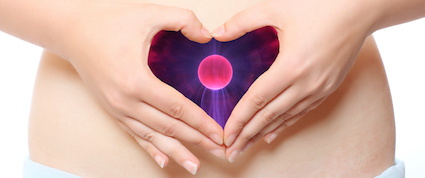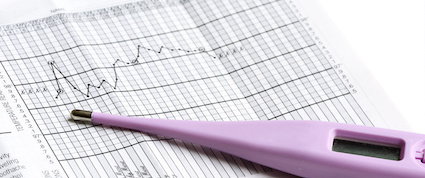
Charting basal body temperature is the best way to determine ovulation, but a woman's body also gives off signals when she is ovulating. The position of your cervix and the cervical mucous you produce changes throughout your menstrual cycle. Therefore, charting the amount and texture of your cervical mucous as well as the position of your cervix can help you pinpoint ovulation.
Types of Cervical Mucous
Cervical mucous can be dry, sticky, creamy, or egg white consistency. You will want to record the type of cervical mucous you have on your fertility chart. If you do not want to use the basal body temperature method of charting, you can simply watch for fertile signs, such as an increase in cervical mucous. Cervical mucous during ovulation has the appearance of eggwhite. If you are charting it is a good idea to write down what kind of cervical mucous you have during your cycle. This will help you to establish the most fertile days of your cycle. You can also watch for the day that your temperature shifts on the bbt chart and see what kind of cervical mucous you are having during that time. If you are having a hard time deciding what your most fertile cervical fluid looks and feels like, having your chart to look at can be a guide.
These are the types of mucous you will see during your menstrual cycle.
Dry
At the beginning of your cycle, prior to ovulation, you will likely produce little to no cervical mucous. Also, right before your period should start, your cervical mucous may become dry again. If you don't notice cervical mucous, you will want to record this on your chart as dry.
Sticky
You may notice sticky cervical mucous prior to ovulation. It feels sticky to your fingers when you touch it.
Creamy
As you get closer to ovulation you will notice thicker, creamy-looking cervical mucous. This mucous looks and feels similar to lotion.
Eggwhite
Eggwhite cervical mucous is the term used to describe the mucous you have during ovulation. It looks like eggwhites and is slippery, clear, and stretchy.
Watery
Watery cervical mucous is wet and may be stretchy. You may notice this type of cervical mucous during ovulation or before having eggwhite cervical mucous.
Cervical Position and Ovulation

You may want to check the position of your cervix to help you tell when you are ovulating. Not all women are comfortable with this, and some women have a difficult time feeling their cervix.
To find your cervix, you may want to be in a squatting position or have one foot on a stool. Insert one or two fingers into your vagina and push them towards the back of your vagina. You will reach a spot that feels firmer than the rest of your vagina. Your cervix may feel soft like your lips or firm like the tip of your nose. You may notice your cervix feeling more open or closed.
Find a comfortable position to check your cervix, and use the same position each time you check. If you use a different position, you won't be able to compare the position of your cervix accurately. It may take you a cycle or two to determine when your cervix is softest, firmest, highest, or lowest.
Right after menstruation, your cervix will be low and easier for you to reach. It will feel firmer and closed. During ovulation, your cervix will be higher and more difficult to reach. It will also feel soft and wet, and you may notice it feeling more open. If you have given birth before, your cervix may feel more open than someone who has not. After ovulation, your cervix normally returns to a more firm, lower position.
